Explore the Top 12 State Parks in Alaska for 2024: Your Expert Guide
- March 28, 2024
- 0 comment
Discover 2024’s Top 12 State Parks in Alaska. An exclusive guide to breathtaking landscapes and adventures in the wild. Start exploring now! Begin your 2024 adventure by exploring the breathtaking state parks of Alaska, where nature unfolds in spectacular vistas, untamed wildlife, and landscapes so vast they stretch beyond the horizon. This guide is your passport to discovering the top 12 must-visit locations across the state, carefully selected to immerse you in the awe-inspiring beauty and serene wilderness Alaska is celebrated for.
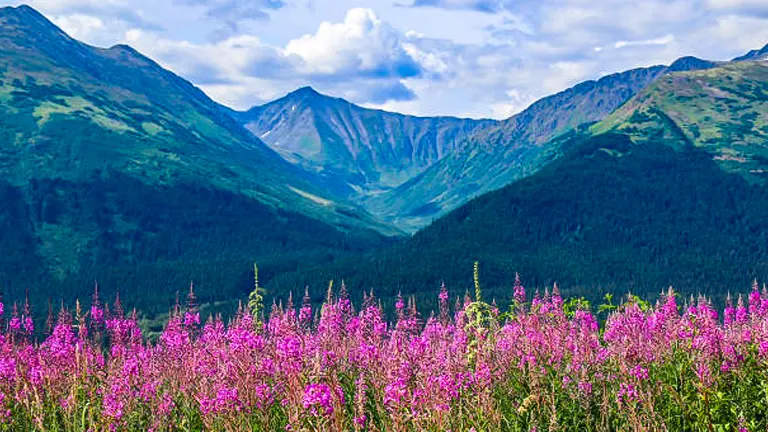
Prepare to be captivated by the quiet majesty of towering glaciers, the tranquil beauty of untouched forests, and the thrilling calls of the wild that beckon adventurers and nature lovers alike. Let’s venture into the heart of Alaska’s natural wonders together, where each park offers its own unique blend of adventure and tranquility.
List of Top 12 State Parks in Alaska for 2024
- Denali State Park
- Chugach State Park
- Birch Lake State Recreation Site
- Kachemak Bay State Park
- Shuyak Island State Park
- Caines Head State Recreation Area
- Afognak Island State Park
- Totem Bight State Historical Park
- Nancy Lake State Recreation Area
- Independence Mine State Historical Park
- Big Delta State Historical Park
- Chena River State Recreation Area
Why Explore Alaska’s State Parks?
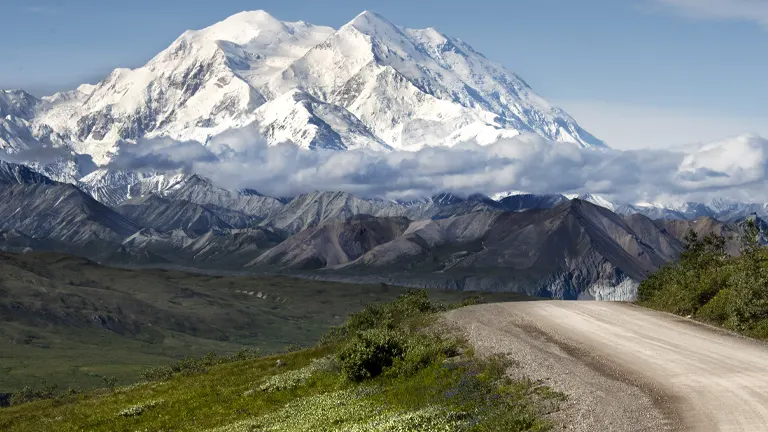
Alaska’s state parks are a testament to the natural world’s splendor and diversity. Visiting these parks not only immerses you in breathtaking landscapes but also offers benefits to your physical and mental well-being. In an era where digital connectivity often disconnects us from the natural world, Alaska’s state parks provide a sanctuary where one can reconnect with nature, find peace, and embark on adventures that rejuvenate the soul.
Top 12 State Parks in Alaska for 2024
1. Denali State Park
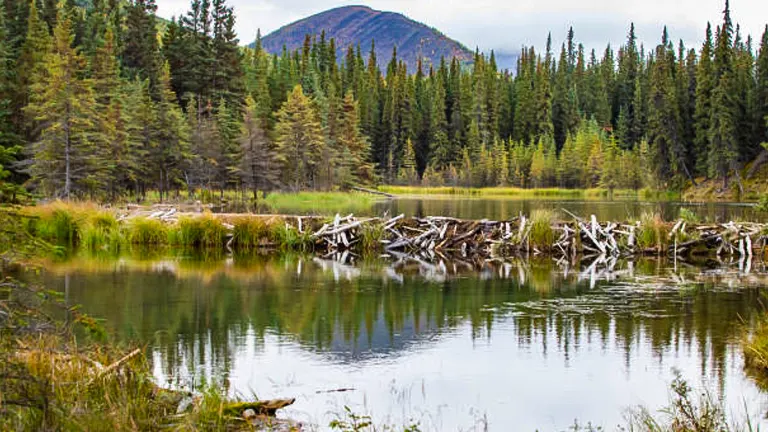
Denali State Park serves as a vast playground for nature enthusiasts, offering a rich tapestry of wildlife and rugged landscapes under the gaze of North America’s tallest peak. The park’s trails cater to all levels of adventurers, from serene walks through fragrant spruce forests to challenging treks across alpine tundra. It’s a place where the wilderness speaks, inviting visitors to immerse themselves in its profound beauty.
- Special Features: Views of Denali, wildlife viewing opportunities, rustic cabins
- Best Time to Visit: June to September for optimal weather and accessibility
- Location & Access: Located approximately 135 miles north of Anchorage, accessible via the Parks Highway
- Ecosystem: Subarctic wilderness, including taiga forests and alpine tundra
2. Chugach State Park
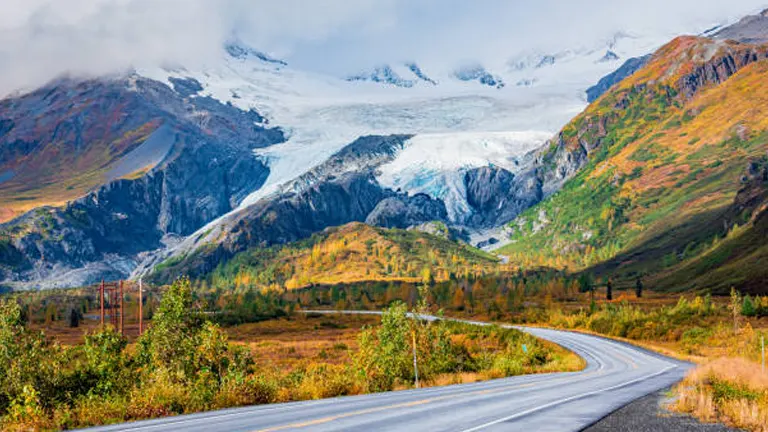
Just a stone’s throw from Anchorage, Chugach State Park is an emblem of Alaska’s diverse natural splendor. Its landscape is a patchwork of towering mountains, tranquil lakes, and rolling hills, offering endless opportunities for hiking, bird watching, and nature photography. Whether you seek the thrill of a mountain ascent or the peace of a lakeside picnic, Chugach is a sanctuary of outdoor bliss.
- Special Features: Panoramic views from Flattop Mountain, diverse wildlife, accessible recreation areas
- Best Time to Visit: Spring through summer for extended daylight and milder temperatures
- Location & Access: Borders the eastern edge of Anchorage, with multiple access points along the Seward Highway
- Ecosystem: Coastal rainforest, alpine tundra, and mountain environments
3. Birch Lake State Recreation Site
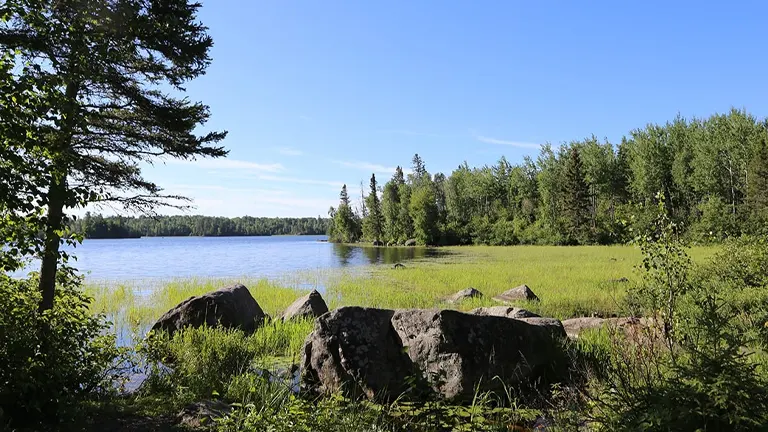
Birch Lake State Recreation Site is an idyllic destination for families and fishermen set in the heart of Alaska’s interior. The park’s clear, calm waters make it perfect for swimming, boating, and especially fishing, with stocked trout and salmon. Campsites near the lakefront offer easy access for a tranquil retreat and the opportunity to enjoy the midnight sun during the summer months.
- Special Features: Stocked lake for fishing, family-friendly camping, water sports
- Best Time to Visit: Late May to early September for the best camping and fishing conditions
- Location & Access: Situated about 60 miles southeast of Fairbanks, accessible via the Richardson Highway
- Ecosystem: Interior forest surrounding a freshwater lake
4. Kachemak Bay State Park

Nestled on the Kenai Peninsula’s southern edge, Kachemak Bay State Park is a pristine marine wonderland. It’s Alaska’s first state park and a true coastal retreat, offering a diverse range of activities from kayaking among ice floes to hiking through lush forests. The park is a haven for bird watchers, with bald eagles and seabird colonies along the cliffs.
- Special Features: Accessible glaciers, rich marine life, bird watching, and backcountry cabins
- Best Time to Visit: Late spring to early fall for kayaking, bird watching, and hiking in pleasant weather
- Location & Access: Across Kachemak Bay from Homer, accessible only by boat or seaplane
- Ecosystem: Coastal ecosystems, including tidal flats, forests, and alpine meadows
5. Shuyak Island State Park
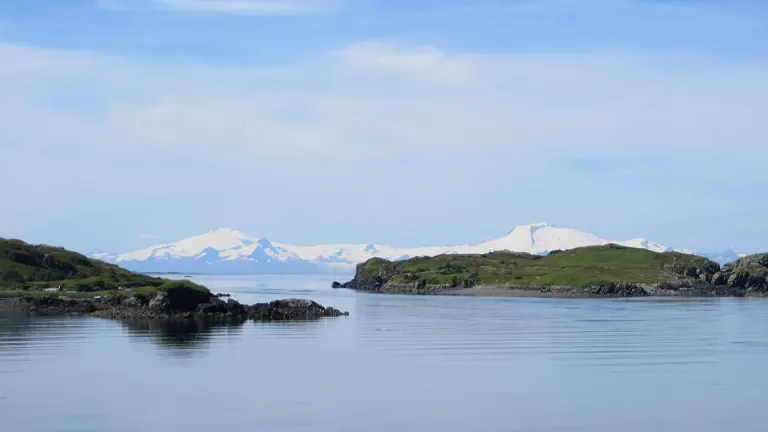
Shuyak Island State Park encompasses most of Shuyak Island and offers a unique wilderness experience in a largely untouched natural setting. Known for its dense Sitka spruce forests and protected bays, the park is ideal for kayaking, fishing, and wildlife observation. Its isolation makes it a perfect spot for those looking to escape into nature’s silence.
- Special Features: Dense spruce forests, secluded bays, rich marine wildlife
- Best Time to Visit: May to September
- Location & Access: At the northern tip of the Kodiak Archipelago, accessible only by boat or seaplane
- Ecosystem: Coastal temperate rainforest, marine ecosystems
6. Caines Head State Recreation Area
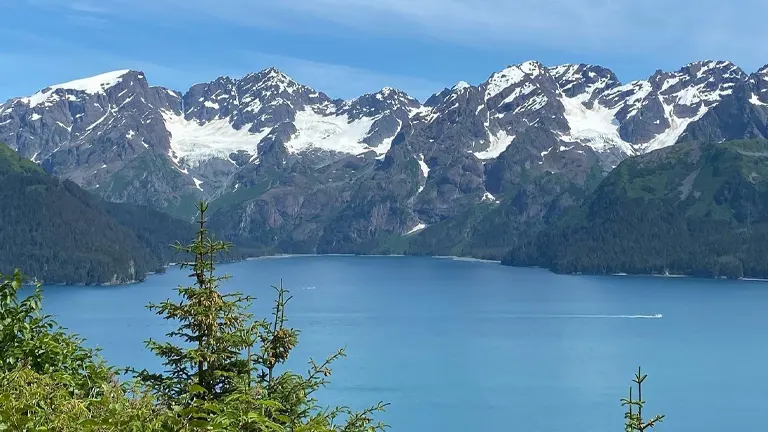
Caines Head State Recreation Area stands out with its combination of historical significance and natural beauty. The park is home to the remnants of Fort McGilvray, a World War II coastal defense installation. Surrounded by rugged coastlines and accessible through a scenic trail which is also a public use cabin, it provides rich opportunities for hiking, beachcombing, and exploring the tidal areas.
- Special Features: Historical military fortifications, scenic hikes, public use cabins
- Best Time to Visit: June through September, when the trails are accessible and the wildlife is most active
- Location & Access: Located near Seward, accessible via boat or a low-tide foot trail from Lowell Point
- Ecosystem: Coastal rainforest, intertidal zones, and alpine areas
7. Afognak Island State Park
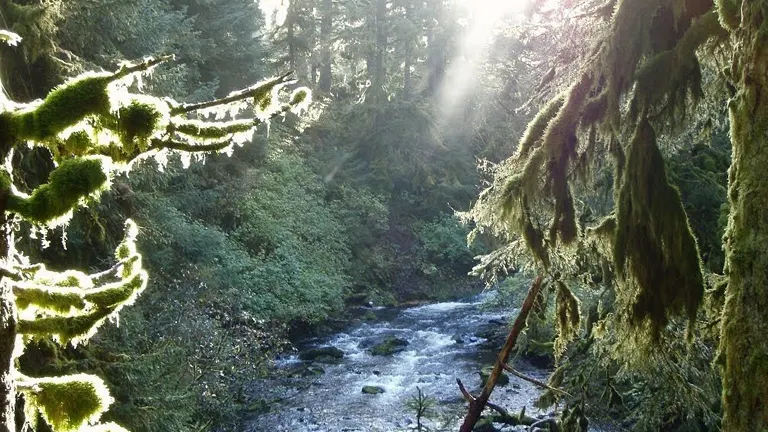
Afognak Island State Park is renowned for its rugged coastline, dense forests, and rich wildlife, including the elusive Kodiak brown bear. The park’s remote wilderness is perfect for fishing, hiking, and wildlife photography. Its untouched beauty is a draw for those seeking solitude and a deep connection with nature.
- Special Features: Dense old-growth forests, rich wildlife, including Kodiak brown bears
- Best Time to Visit: May to September
- Location & Access: North of Kodiak Island, accessible by boat or floatplane
- Ecosystem: Coastal temperate rainforest, marine environments
8. Totem Bight State Historical Park
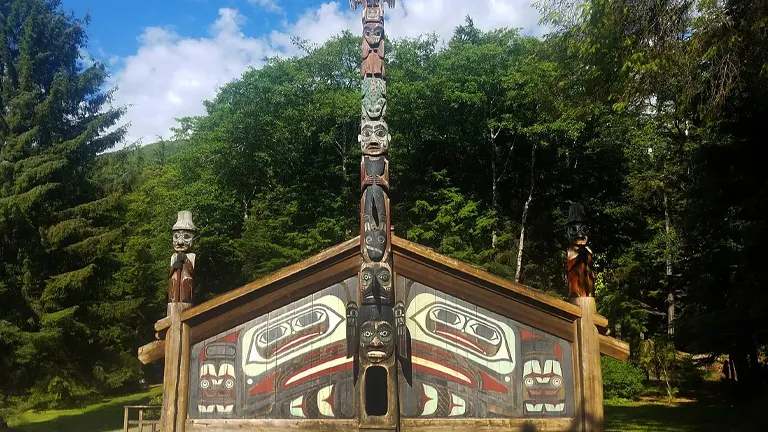
Totem Bight State Historical Park offers a glimpse into the rich cultural heritage of Alaska’s Native peoples through beautifully restored totem poles and a traditional clan house. Located on the shores near Ketchikan, it provides not only a cultural experience but also stunning views and a peaceful setting for leisurely walks.
- Special Features: Restored totem poles, traditional clan house, cultural significance
- Best Time to Visit: Year-round
- Location & Access: Near Ketchikan, easily accessible by road
- Ecosystem: Coastal forest, shoreline
9. Nancy Lake State Recreation Area
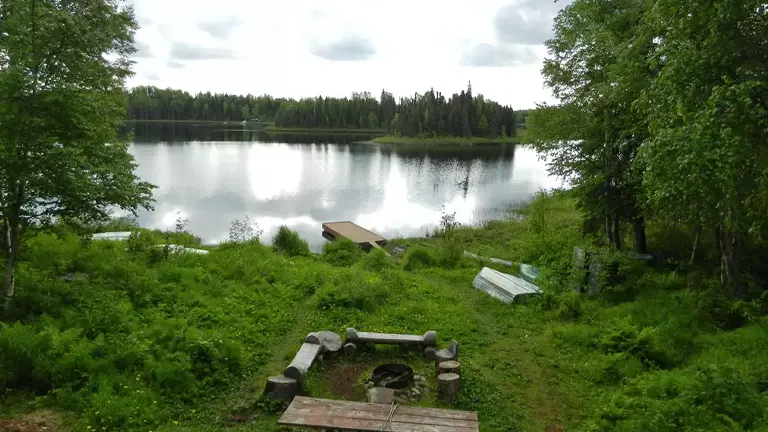
Nancy Lake State Recreation Area is a serene getaway offering a chain of beautiful lakes perfect for canoeing, fishing, and swimming. With its family-friendly campgrounds and picnic areas, it’s a great place to enjoy Alaska’s long summer days, whether you’re on the water or hiking through the surrounding forests.
- Special Features: Canoe trails, lakefront cabins, family-friendly activities
- Best Time to Visit: May to September
- Location & Access: Approximately 67 miles north of Anchorage, accessible via the Parks Highway
- Ecosystem: Freshwater lakes, boreal forests
10. Independence Mine State Historical Park

Nestled in the scenic Talkeetna Mountains, Independence Mine State Historical Park offers a fascinating look into Alaska’s gold mining history. Visitors can explore the preserved mine buildings and learn about the lives of those who worked in this remote wilderness seeking their fortunes.
- Special Features: Preserved gold mine buildings, historical exhibits, hiking trails
- Best Time to Visit: June to September
- Location & Access: Located in Hatcher Pass, accessible by road from Anchorage or Wasilla
- Ecosystem: Alpine tundra, mountainous terrain
11. Big Delta State Historical Park
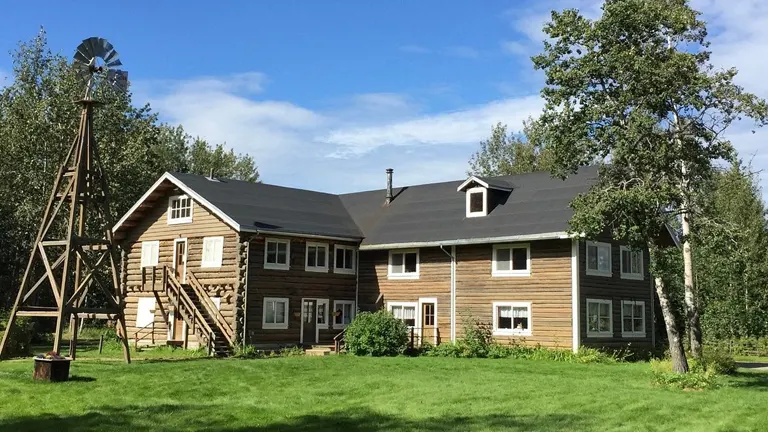
Big Delta State Historical Park is a historically significant area that showcases the early 20th-century frontier life in Alaska. The park features the restored Rika’s Roadhouse, a key stop along the Valdez-to-Fairbanks trail, and offers insights into the challenges and achievements of Alaska’s early settlers.
- Special Features: Restored Rika’s Roadhouse, historical exhibits, walking trails
- Best Time to Visit: May to September
- Location & Access: Located in Big Delta, accessible via the Richardson Highway
- Ecosystem: Riverine, boreal forest
12. Chena River State Recreation Area
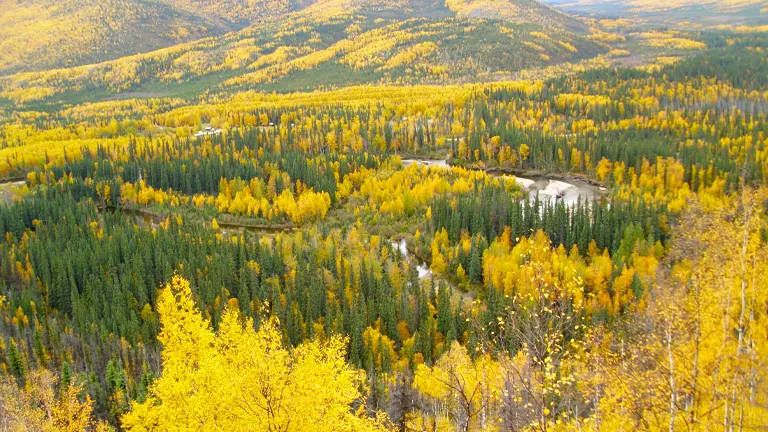
Chena River State Recreation Area provides a blend of leisure and adventure with its riverfront setting and surrounding hills. It’s popular for fishing, hiking, and hot springs, making it an ideal destination for those looking to enjoy Alaska’s natural beauty and recreational activities in a more accessible location.
- Special Features: Hot springs, river activities, extensive trail system
- Best Time to Visit: Summer for most activities, winter for aurora viewing
- Location & Access: Located about 60 miles east of Fairbanks, accessible by road
- Ecosystem: Boreal forest, river ecosystems
Planning Your Adventure: Practical Tips for 2024
Before you embark on your journey to Alaska’s state parks, consider these practical tips to ensure a smooth and enjoyable adventure.
- Travel Logistics: Many parks are remote and require careful planning to reach. Consider booking travel well in advance, especially for parks that require boat or plane access.
- Gear and Preparation: Alaska’s weather can be unpredictable. Pack layers, waterproof clothing, and sturdy hiking boots. Don’t forget essential safety gear, including bear spray in bear country.
- Permits and Regulations: Some activities and areas may require permits or have specific regulations. Check with each park’s visitor center or website for the most current information.
- Leave No Trace: Preserve the beauty of Alaska’s parks by following Leave No Trace principles. Pack out what you pack in, stay on designated trails, and respect wildlife.
Conservation and Respect
As visitors to these magnificent lands, we play a crucial role in their preservation. Engaging with Alaska’s state parks responsibly ensures they remain vibrant and intact for future generations.
- Support Local Conservation Efforts: Consider donating to or volunteering with organizations dedicated to preserving Alaska’s natural and cultural heritage.
- Educate Yourself and Others: Learn about the ecosystems, wildlife, and cultural histories of the places you visit. Share your knowledge and experiences to foster a community of informed and respectful adventurers.
- Wildlife Interactions: Always observe wildlife from a safe distance. Feeding or approaching wildlife can disrupt their natural behaviors and endanger both animals and humans.
Conclusion
Exploring the top 12 state parks in Alaska offers an unparalleled adventure into some of the most breathtaking landscapes on earth. From the solitude of remote wilderness areas to the awe-inspiring beauty of glaciers and fjords, these parks provide a unique window into the natural world. As we look ahead to 2024, let this guide be your compass to discovering the wonders of Alaska’s state parks. Whether you’re a seasoned outdoor enthusiast or a first-time visitor, Alaska’s state parks welcome you to a world of adventure, discovery, and awe-inspiring beauty. Embrace the journey, respect the land, and carry the spirit of exploration with you.
FAQs
- What’s the best way to experience the northern lights in Alaska’s state parks?
The best way to witness the aurora borealis is by visiting areas with minimal light pollution during the winter months. Chena River State Recreation Area is highly recommended, offering organized aurora viewing excursions and warm lodges to retreat to after a cold night under the stars. - Can I participate in any citizen science projects while visiting these parks?
Yes, many parks encourage visitors to contribute to citizen science projects. For example, Denali State Park has programs where you can report wildlife sightings or participate in bird counts. It’s a great way to contribute to conservation efforts while enjoying your visit. - Are there any state parks in Alaska that offer a historical insight into the state’s mining era?
Independence Mine State Historical Park provides a deep dive into Alaska’s gold mining history. Visitors can explore the preserved mine buildings and learn about the mining techniques and daily life of miners during the early 20th century. - What state park in Alaska is best for a family vacation with children?
For families, the Nancy Lake State Recreation Area stands out with its canoe trails, lakefront cabins, and easy hiking paths. It’s a fantastic spot for teaching kids to fish, paddle, and appreciate nature in a safe and scenic environment. - How accessible are Alaska’s state parks for visitors with mobility challenges?
Many parks have made strides in accessibility. For example, Totem Bight State Historical Park offers wheelchair-accessible paths leading to the totem poles and clan house. Always check the park’s official website or contact the park office for the most up-to-date information on accessibility. - Are there guided tours available in these state parks?
Yes, several parks offer guided tours, ranging from cultural walks in Totem Bight State Historical Park to nature hikes in Chugach State Park. These tours are a fantastic way to gain insider knowledge about the park’s history, wildlife, and ecosystem. - What unique wildlife viewing opportunities are there in Alaska’s state parks?
Each park offers unique wildlife viewing experiences. For instance, Wood-Tikchik State Park provides opportunities to see brown bears, eagles, and moose. Meanwhile, Afognak Island State Park is known for its Kodiak brown bears and marine wildlife, including sea otters and seals. - How can I ensure that I leave no trace while exploring Alaska’s state parks?
Practicing Leave No Trace principles is crucial. Always pack out what you bring in, stay on designated trails to protect the flora, and keep a safe distance from wildlife. Additionally, many parks offer educational programs on how to minimize your impact on the delicate ecosystems you visit.
Explore our dedicated section on national forests and state parks to uncover hidden gems and outdoor wonders.
We can’t wait to learn about your explorations in Alaska’s state parks! Tell us about your encounters, insights, and those moments that took your breath away. Join us in celebrating our love for the outdoors and our commitment to conserving the stunning landscapes of Alaska.

Benjamin Brooks
Forestry AuthorGreetings! I'm Benjamin Brooks, and my journey over the past 15 years has revolved around the fascinating realms of content creation, expertise in snow clearing, and the intricate world of lumberjacking and landscaping. What began as a simple curiosity about the natural world and heavy machinery has evolved into a passionate profession where my love for crafting words intertwines seamlessly with my lumberjacking and garden skills.



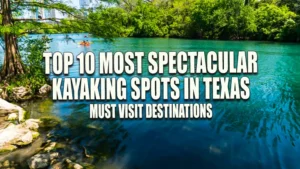









Leave your comment